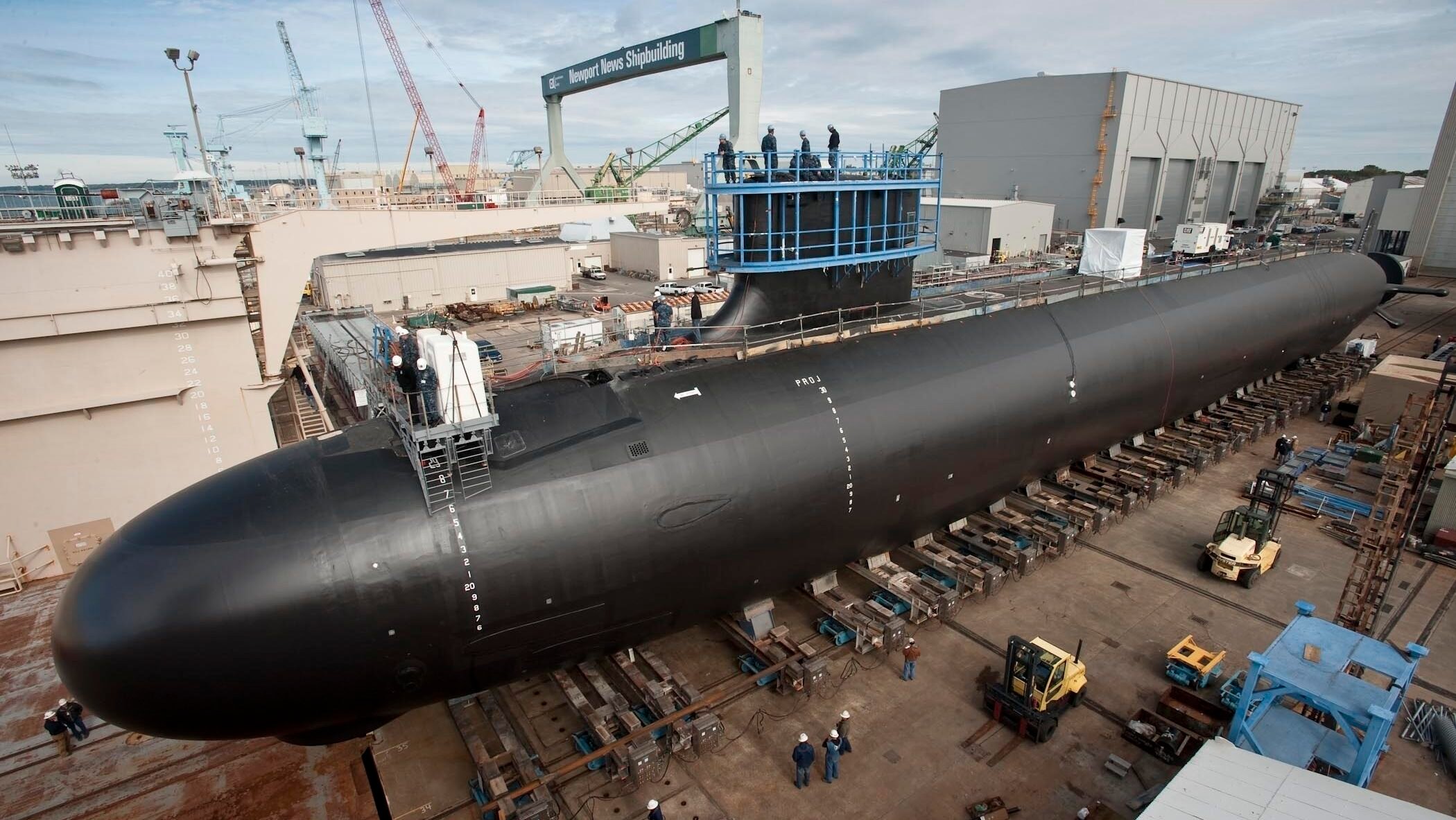Babcock Australasia’s Sir Nick Hines said the companies envision an “AUKUS passport” to more easily track skills of the workforce for the subs, allowing the countries to trade workers and fill gaps quickly.

The Virginia-class attack submarine Minnesota (SSN 783) is under construction at Huntington Ingalls Newport News Shipbuilding in 2012. (U.S. Navy photo courtesy of Newport News Shipbuilding/Released)
INDOPAC 2023 — American shipbuilder HII and British defense firm Babcock International Group have joined forces here with three Australian universities to begin tackling the enormous task of helping Australia build a nuclear enterprise for the AUKUS nuclear-powered submarines — including plans for remediation and storage of nuclear waste — essentially from scratch.
The two companies are working with the University of New South Wales, one of the only schools here boasting a nuclear engineering department; Curtin University, located close to where Australia’s nuclear submarines will be based in Western Australia; and the University of Adelaide, near the yards where Australia has historically built its submarines.
They will work to train and build a workforce of as many as 10,000 people to the very high standards required of nuclear engineers and tradespeople like welders, Sir Nick Hine, managing director of AUKUS and international business at Babcock Australasia, said in an interview here.
HII not only builds Virginia class submarines, along with Electric Boat, but also manages US nuclear facilities and remediates nuclear waste from some of them.
Babcock already works on the Collins class sub and is, of course, a defense and engineering company based in the UK. It operates the UK’s only facility for refitting, refueling and defueling nuclear submarines, and manages two of the UK’s three naval bases that do the support and maintenance of Britain’s fleet of nuclear-powered submarines.
The two companies signed a strategic agreement in July that committed them to work together on nuclear ships, and said they would “explore how their combined capability as global leaders in defense can be applied in support of the Australia — United Kingdom — United States (AUKUS) programs.”
“It’s over 100 years of experience, you know, designing, building, maintaining, and then disposing of nuclear-powered submarines,” Eric Chewning, executive vice president for strategy and development at HII told Breaking Defense. “And the second piece is, by working together, we’re a one-stop shop for reach back into both the US and the UK systems.”
Next week, HII is visiting Adelaide and Perth to begin to screen suppliers, mostly small and medium sized businesses. They plan to comb through 200 of them to begin to build the first levels of a nuclear industrial base, Chewning said.
Part of what the two companies will do as they build the cadre of workers is create what is being called the “AUKUS passport,” Hine said. It would be a searchable database of workers in the three AUKUS countries listing their classification levels, skills and location.
“I can search for, let’s say I need a nuclear welder, class one, to be able to do this, and I haven’t got one and there isn’t one in the UK. I find there’s one in Australia,” he said. That could allow a company to fill the job for six or seven months for a critical vacancy.
“The idea is to make this more efficient, but also it’s a better employment cycle. It’s more exciting for people. It gives them more opportunity for longer-term development. It means that people can travel and do all those other things,” Hine added. “It means that we have the ability to draw on a bigger skill base to deliver the same thing across three nations.”
Before the “AUKUS passport” can be created, of course, Australians must be trained. Many of them must receive specialized nuclear clearances, known in the US as Q clearance. The places they work must meet the special security standards required for the handling of nuclear materials and their associated equipment. The Western Australian port, HMAS Stirling, where the Virginia class and then the SSN AUKUS subs will be based, require much larger parking lots, more housing and larger facilities to handle the bigger nuclear-powered subs and their much larger crews. The Collins class boats boast a crew of 43, compared to 132 for a Virginia boat.
“There’s a very coarse metric, and it’s a bit of euphemism, but the one thing we’re going to need to work out is where everybody’s going to park their car,” Hine said, “because — let’s be really clear — sailors come with cars and they want to park near their place of work. And (HMAS) Stirling does not have a whole lot of backup.”
He said that Babcock and HII “have the necessary wherewithal to be able to do this” including building houses and expanding the base. “Now, you can either do it piecemeal, which is challenging because you’ve got to look at all of it working together. Or, you can give it to serious people who actually know what they’re trying to achieve in totality in order to take risk out of the program.”
